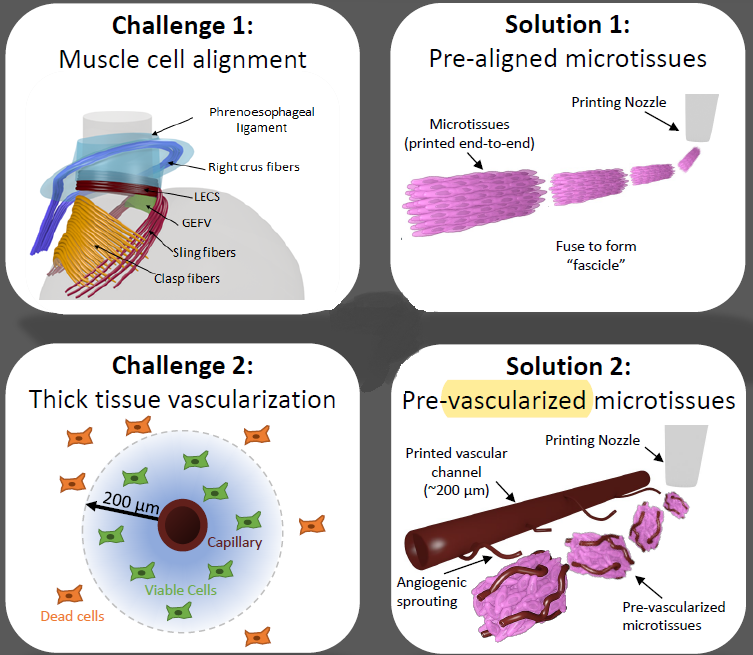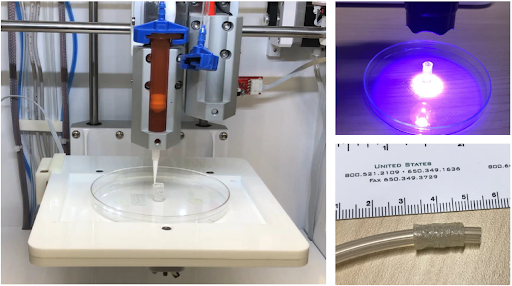A novel approach for bioprinting complex tissue models
A new method to align cells in muscle tissue using long, pre-aligned microtissues, which are suspended in a bio-ink and printed using a 3D extrusion bioprinter to form larger macrotissues.


Applications
- 3D bioprinting of complex biological microenvironments:
- Contractile smooth muscle tissues (blood vessel/ urethral/ bladder grafts)
- Cardiac tissue
- Skeletal muscle and tendons
- Tissue engineering
- Transplantation and regenerative medicine
- Pathobiology research
Key Benefits & Differentiators
- Access to complex tissue structures: Pre-alignment of cells within microtissues allows for access to multidirectional, previously intractable structures such as those found in the cardiovascular, gastrointestinal, and urogenital systems.
- Increased scale: Implementation of pre-aligned microtissues as “building blocks” in a 3D bioprinter allows for creation of larger tissue constructs than previous approaches.
- Improved workflow: Rearrangement of the traditional tissue engineering process decreases complexity of the critical final maturation step.
Tissue Engineering: Promise and Limitations
Experimentally-derived tissues are useful for a variety of applications in human health, from modeling and studying disease biology to direct treatments as grafts in regenerative medicine. Muscle tissues in particular are challenging to produce, in part due to the high degree of cellular alignment required for force generation. Many strategies have been developed to create aligned tissue-engineered muscle, relying on chemical gradients, mechanical forces, or remote fields, all of which are effective at producing unidirectional tissues such as skeletal muscles. However, many other muscle types contain cells with multiple directions of alignment, which these strategies struggle to replicate. Currently inaccessible tissues include many types critical to understanding and treating disease, such as cardiac muscle (cardiovascular disease) and the smooth muscle of the gastrointestinal and urogenital systems (gastroesophageal reflux disease, etc.).
Pre-Aligned Microtissues: Building Blocks for Complex Systems
A novel tissue engineering method, developed by researchers at the University of Minnesota, reorders the traditional approach for tissue production by first pre-aligning and maturing cells in microtissues, which can be used as subunits in the creation of a larger tissue construct via 3D bioprinting. This strategy allows for access to previously intractable tissue types with non-orthogonal alignments. Beginning tissue maturation earlier in the process through the use of microtissues reduces the complexity of the final maturation step, facilitates scaling up to production of larger constructs, and also provides greater control over tissue alignment and vascularization in the final model. The end result is access to tissue constructs with greater complexity (and thus, utility) than attainable through conventional methods.
Phase of Development
TRL: 3-5Pre-aligned smooth muscle microtissues have been successfully produced and bioprinted into simple macrotissue constructs, with demonstrated outgrowth and fusion; in vivo animal studies are in progress.
Desired Partnerships
This technology is now available for:- License
- Sponsored research
- Co-development
Please contact our office to share your business’ needs and learn more.
Researchers
- Angela Panoskaltsis-Mortari, PhD Vice Chair for Research and Professor, Department of Pediatrics